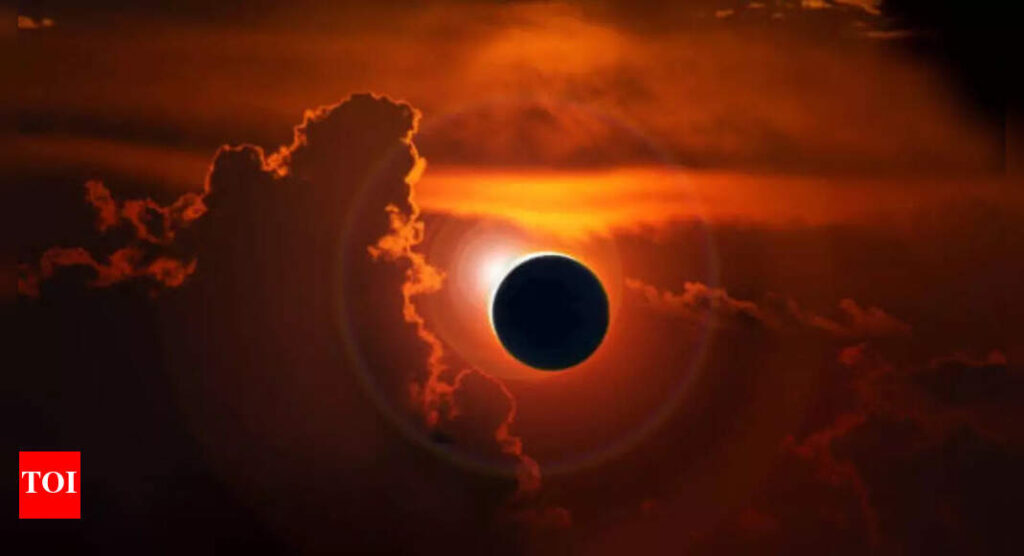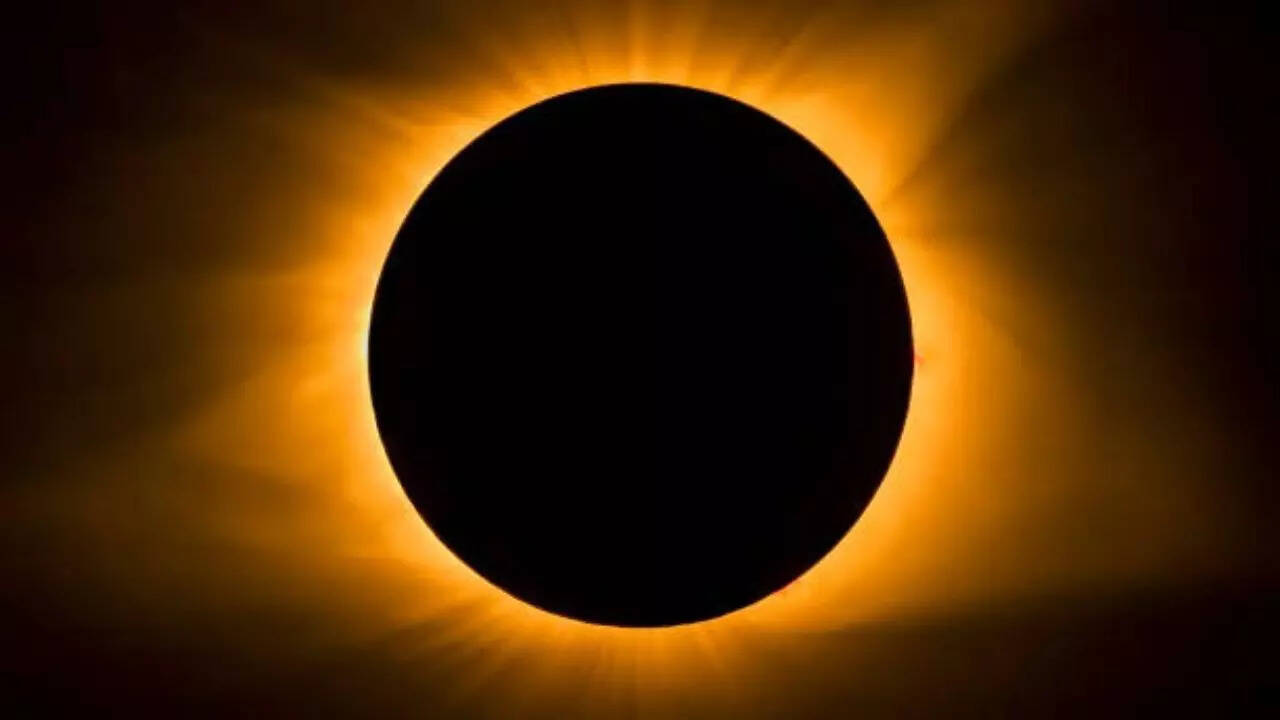Different types of solar eclipse: Which one is on September 21?

Any eclipse, be it lunar or solar, comes with its own share of excitement, imagination, and rituals. People get excited to buy special glasses to witness the solar eclipse safely, or maybe the first-timers dream of every possible and impossible way to witness it with naked eyes. As the next and the last solar eclipse is just around the corner, not even a week of waiting, many questions and confusions are coming up. After being confirmed with the biggest confusion, will it be visible from India? Now the next question is: What kind of solar eclipse is this one going to be?The solar eclipse happening on September 21, 2025, is a partial solar eclipse, visible primarily in the Southern Hemisphere with dramatic views in New Zealand and parts of Antarctica. During this celestial event, the Moon moves between Earth and the Sun but only blocks a part of the Sun’s disk, creating a striking crescent-shaped sunrise and up to 86% coverage for some lucky locations. But what are the other types that exist in the fascinating world of solar eclipses, their different types, what makes each unique, how often they happen, and their special features?
The types of solar eclipse one can see from Earth:
Solar eclipses captivate skywatchers everywhere. But eclipses are not all the same, they come in four distinct types, each with its own cosmic twist:
1.Total Solar Eclipse
First and the most demanding one to witness. A total solar eclipse occurs when the Moon passes directly between the Earth and the Sun, and the Moon’s apparent size is large enough to completely cover the Sun’s bright disk. This alignment plunges the Earth’s surface, for a brief period, into a complete twilight, even though it may be midday. When someone says Solar Eclipse, the majority of people imagine this scene: to see evening in the middle of a day. The sudden darkness feels dramatic and almost surreal, with stars and planets sometimes becoming visible in the sky.One of the most striking aspects is the appearance of the solar corona, the Sun’s outermost atmosphere. Normally hidden by the Sun’s intense glare, the corona shines as a ghostly, pearly-white halo around the Moon during totality. It is delicate, and constantly shifting, giving observers an unforgettable glimpse of the Sun’s mysterious outer layers.See More: Solar Eclipse 2025 Live Updates
Specialties of the Total Solar Eclipse:
- Path of Totality: Only observers located within a very narrow strip on Earth (sometimes just 100–200 km wide) can witness totality. Those outside this path see only a partial eclipse.
- Dramatic temperature drop: During a total solar eclipse, temperatures can drop noticeably within minutes, adding to the sense of wonder.
- 360° Sunset effect: The horizon glows in all directions, resembling a sunset that fascinates the viewer.
- Animal and human reactions: Birds may roost, nocturnal animals may come up thinking it is night already, and humans often experience awe or silence, marking it as a deeply emotional event.
- Research opportunity: Total eclipses allow scientists to study the Sun’s corona, solar flares, and even test astronomical theories.

Credit:iStock
2.Annular Solar Eclipse
An annular solar eclipse takes place when the Moon passes directly in front of the Sun but appears slightly smaller in the sky because it is at or near its farthest point (apogee) from Earth. As a result, the Moon cannot completely cover the Sun’s disk. Instead, it creates a brilliant, thin, circular outline of sunlight around the dark Moon. This rare spectacle is called the ‘Ring of Fire.’During this type of eclipse, the Sun never fully disappears. Daylight stays, but it takes on an unusual, muted quality, and the atmosphere feels surreal. Shadows become sharper and distorted, and the Sun appears as a glowing ring, unlike anything else in the natural world.Specialties of the Annular Solar Eclipse:
- The Ring of Fire: The most dramatic highlight of this specific type of solar eclipse is that here a flawless ring of sunlight surrounds the Moon, shining brightly in the sky.
- Daylight becomes faint: In contrast to a total eclipse, the atmosphere does not become fully darkened but rather assumes a dusky, eerie sheen.
- Broader path: The annularity path (where the ring can be seen) is generally wider than the path of totality during a total eclipse, so more individuals can see the event.
- Safety measure: Since the Sun is never entirely obstructed, eclipse glasses are always required to view in order to do so for the safety aspect. Using the naked eye may result in permanent eye damage.
- Rarity of Ring of Fire: While more frequent than total eclipses worldwide, seeing the Ring of Fire live is still a lifetime experience for most.
- Cultural symbolism: In various cultures, the shining ring has given rise to myths and legends regarding cosmic wars, fire rings, and heavenly messages.

Credit:istock
3.Partial Solar Eclipse
A partial solar eclipse occurs when the Sun, Moon, and Earth are not perfectly aligned. Instead of covering the entire solar disk, the Moon only blocks a portion of it. This creates the striking appearance of the Sun being “bitten” into, often forming a crescent-like shape in the sky. Unlike total or annular eclipses, the Sun is never fully hidden, and only part of its light is obscured.During this celestial event, daylight does not vanish but becomes slightly dimmer, depending on how much of the Sun’s disk is covered. Millions of people outside the narrow paths of total or annular eclipses often experience only a partial eclipse, making it the most commonly observed type of solar eclipse worldwide.Specialties of Partial Solar Eclipse:
- Crescent Sun: The most iconic feature of the partial solar eclipse, the one that is going to be visible on 21st September, 2025, is that here the Sun appears as a glowing crescent or partially “nibbled” disk as if someone has eaten half of it.
- Commonality: Partial eclipses happen more often than total, annular, or hybrid eclipses, so more people get the opportunity to see them.
- Wide and better visibility: A partial solar eclipse can be seen over huge regions, far beyond the narrow paths of totality or annularity. More people can witness this celestial event than the previous two.
- Light and shadow effects: Shadows on the ground may appear sharper, and pinhole projections or tree leaves can act as natural projectors, creating multiple tiny crescents on surfaces.
- Safety is one of the major things to keep in mind: As the Sun is never fully covered, protective solar viewing glasses or filters are absolutely essential throughout the event.

Credit:istock
4.Hybrid Solar Eclipse
A Hybrid Solar eclipse is the rarest and most fascinating of all eclipses. It occurs when the alignment of the Sun, Moon, and Earth is such that the eclipse shifts between total and annular along its path, a twin-in-one experience. This change happens because of Earth’s varying distance between the Moon and different points on the planet’s surface.In some regions, observers may witness the breathtaking darkness of a total eclipse, where the Sun is completely covered. Meanwhile, in other places, the same event will appear as an annular eclipse, with the Sun forming the fiery Ring of Fire around the Moon. A hybrid eclipse is often so brief and geographically specific that it is considered a once-in-a-lifetime astronomical spectacle.Specialties of the Hybrid Solar Eclipse:
- Rarest of all: Hybrid eclipses make up less than 5% of all solar eclipses, making them extraordinary and highly prized by astronomers and eclipse chasers.
- Twin-in-one nature: The same eclipse can be total in some locations and annular in others, a phenomenon no other eclipse type offers.
- Path of uniqueness: Only narrow and specific parts of Earth’s surface experience the full hybrid effect, while others may see it as a partial eclipse.
- Sudden shift: Observers along the path may witness the eclipse switch from annular to total (or vice versa) in real time, making it more interesting and unbelievable to witness.





